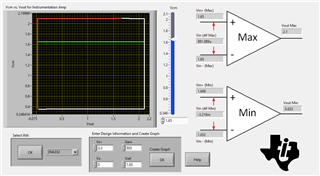Other Parts Discussed in Thread: INA332, INA2321
Hello I need help with the design
I am using 2 INA2332 IC for 4 load cells I want a gain of 500 so calculated resistors were R2= 1M and R1 = 10K
Use the same type of resistors for all 4 channels in the output but I am getting an offset of 1.2V in one channel and 0.6V in other one
I am ok with offset but it should be constant so that I can reduce it from the input by adding a resistor divider
Things I tried
1) I tried grounding reference Ref A and Ref B
2) I tried some more resistor combinations with it I could find more offset changes


